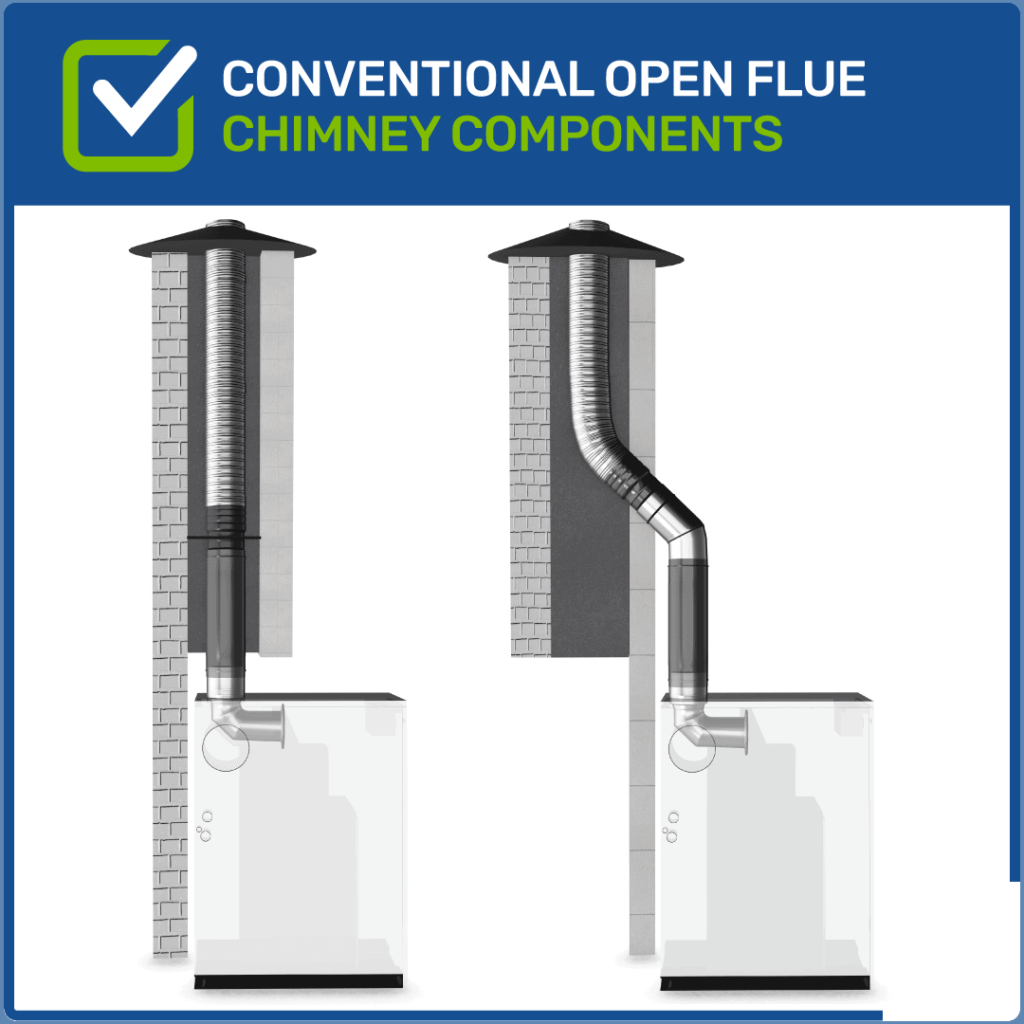Balanced flue gas fires are becoming more and more popular day by day. Thanks to their adaptability, which allows them to be put in a wide range of homes. Traditional conventionally flued flames need the use of a Class 1 chimney breast, which is becoming increasingly rare. As a result, several firms are gradually phasing out conventionally flued models. A vertical pipe (usually 1 meter or more in length. But a 90degree bend and a wall termination are included in most balanced flue kits. People can choose from a variety of flue choices, including pipes of various lengths, and bends at various angles. A false chimney breast is usually required to house all of the flue parts.

How an open flue system works
This type of gas fireplace has a glass front that totally seals the room. There will be no draughts as a result, and the heating effectiveness of the fire will be substantially improved. A twin-wall pipe, rather than a standard chimney pipe, vents directly to the outdoors. An outside pipe draws in the air for combustion, while an inner pipe transports the combustion gases from the fire to the outside of the property.
Also Read: Five Useful Tips to Keep Your Family Safe from House Fires
A traditional class 1 or class 2 chimney, a traditional gas fire or solid fuel burning fire uses an open flue system. The fire appliance in an open flue system is ‘open’ to the room’s air supply. This implies that the oxygen it needs to feed the fire comes from within your home, possibly through vents in the casing if your fire doesn’t have an open flame.

How a balanced flue system works:
A balanced flue, sometimes known as a ‘closed’ system, differs from an open flue in one important way. Instead of taking clean air from your room, it pulls it in through a pipe from outside the house. The air in your room is not influenced at all since balanced flue fires are completely walled off from your room with a glass panel. The same pipe that brings in outside air also takes out waste air. Imagine a smaller tube inside a larger tube, with one taking in air and the other pushing it out.
Advantages of balanced flue gas fires
A balanced flue gas fire, as opposed to a flueless gas fireplace, has a number of advantages. Gas fireplaces have traditionally been situated beneath a traditional chimney aperture that draws oxygen from the living room and propels hot air up the chimney, whereas flueless flames rely on an air vent around one meter away from the fire. These sorts of gas fires can have a significant influence on your energy expenses because they require continual ventilation to maintain burning, and they aren’t as reliable at delivering a pleasant, consistent heat. There’s even a chance that carbon monoxide will find its way into your home.

On the other hand, balanced flue designs have a twin flue system that can collect air straight from the outside and return it to the outside once it has been used by the fire, whether they be hole in the wall gas fires or hearth-mounted gas fires.
Because balanced flue gas fireplaces are entirely sealed from the living area, there is no need for additional ventilation. And there is no risk of carbon monoxide poisoning, fire, or injury. Even homeowners with traditional chimneys can benefit from balanced flue modifications by simply installing a flue liner in their chimney.
Can you install a balanced flue in a conventional chimney?
Gas fires with a balanced flue are primarily intended for use in rooms without a chimney. Many people with traditional class 1 chimney fires, on the other hand. Choose to convert to a balanced flue because of the benefits.
This is achievable, but you’ll need to seal up your chimney and install a new balanced flue through the wall. Your traditional chimney will be decommissioned; you can still use the existing wall cavity in your chimney breast, but a new horizontal pipe will be installed through the wall.
If you want to put a balanced flue in a traditional chimney, you’ll need to know the distance between the front of the chimney breast and the outside wall. Make sure your balanced flue pipe is long enough to reach through this cavity.

